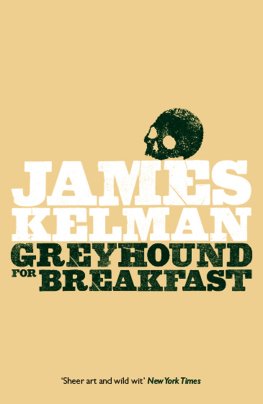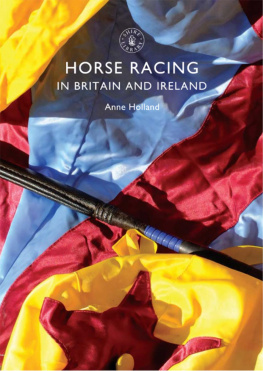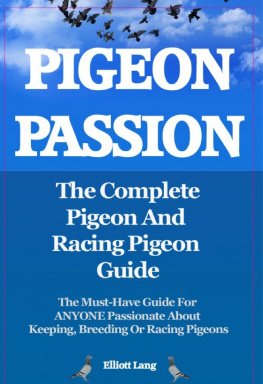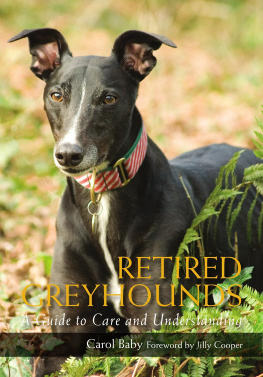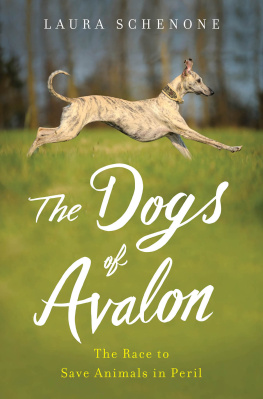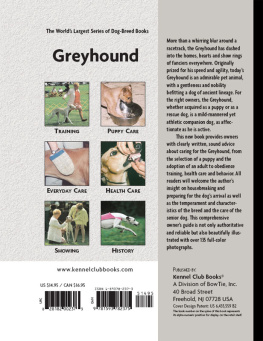GREYHOUND RACING AND BREEDING

A RACE IN P ROGRESS,
Greyhound Racing and Breeding
By
A. Croxton Smith
Vintage Dog Books
Home Farm
44 Evesham Road
Cookhill, Alcester
Warwickshire
B49 5LJ
www.vintagedogbooks.com
Read Books 2005
This book is copyright and may not be reproduced or copied in any way without the express permission of the publisher in writing.
ISBN No. 978-1-84664-056-8
Published by Vintage Dog Books 2005
Vintage Dog Books is an imprint of Read Books
British Library Cataloguing-in-Publication Data
A catalogue record for this book is available from the British Library.
Vintage Dog Books
Home Farm
44 Evesham Road
Cookhill, Alcester
Warwickshire
B49 5LJ
CONTENTS
ILLUSTRATIONS
GREYHOUND RACING AND BREEDING
CHAPTER I
HOW THE SPORT ORIGINATED
As in the case of so many other things, the germ of greyhound racing as a sport was planted in England, but fructified elsewhere. We seem to have a national genius for invention or discovery, though frequently we have failed to make a practical use of ideas that have brought prosperity to others.
Having been told that some bright spirit was responsible for starting greyhound racing meetings in a field near the Welsh Harp, Hendon way, fifty years ago, the hare being propelled by a windlass worked by hand, I made it my business to turn up contemporary records, so that the facts could be given to the public. The following account is from The Times of September II , 1876, under the heading of Coursing by Proxy;
To see a pack of greyhounds in pursuit of their prey, it will not in future be necessary to wait for the close of the year, or to repair to some remote moorland country, and there to bide ones time in cold and damp weather for the chance of obtaining a momentary glimpse of the hounds in full chase. Thanks to an ingenious mechanism, it will soon be possible to see this any day in the year, and within less than an hours journey from the heart of London. In a field near the Welsh Harp, at Hendon, a course has, in fact, been already laid, off for hunting an artificial hare
For a distance of 400 yards in a straight line, a rail has been laid down in the grass. It is traversed through its whole length by a groove, in which runs an apparatus like a skate on wheels. On this sort of shuttle is mounted the artificial hare It is made to travel along the ground at any required pace, and so naturally to resemble the living animal that it is eagerly pursued by greyhounds. On Saturday afternoon, at half-past three oclock, a trial was made of the new mechanical arrangement. A considerable number of persons were present.
Although within a short distance of the Welsh Harp, the field is hid from neighbouring houses by a railway embankment, and is quite secluded. The whole scene was that presented by a racecourse. The rail over which the sham hare runs is hid in the grass, and the windlass by which the apparatus is moved does not catch the eye of the spectator. When the hour came all that was seen was the artificial hare bounding out, quite naturally, like the real animal, from its bag, and followed at once by the hounds, like so many kittens after a cork. It was amusing to watch the eager greyhounds in their headlong race, striving in vain with all their might to overtake the phantom hare, which a touch of the windlass could send spinning like a shadow away out of their reach.
The new sport is undoubtedly an exciting and interesting one. It is, perhaps, entitled to the commendation bestowed upon it by the promoters. It is they say, well worthy of the attention of the opponents of sports involving cruelty to animals, as it will afford an innocent recreation to all, without the faintest shadow of the reproach of cruelty attaching to it As a minor recommendation, we are told that it supplies a means of training greyhounds, but its usefulness in this respect remains to be proved. In the course of recent trials of the apparatus, it is stated that the hounds succeeded more than once in catching the hare, which they tore into shreds with destructive fury. Whether this is to become a part of future performances we do not know
It is appropriate that another letter from The Times of June 30, 1927, should be given as an addendum to the above. Mr. Philip E. Noble, Jesmond Dene House, Newcastle-onTyne, wrote :
The statement is made in the article in your issue of June 25th that Mistley can claim to have won the first greyhound race after the mechanical hare ever held in this country. Mr. William Hedley-Dent, of Shortflatt, the son of Mr. Edward Dent (the breeder and trainer of Fullerton), furnished me with the following particulars with regard to his fathers first success with greyhounds. Mr. Edward Dent won the Kingsbury Stakes of the mechanical hare meeting held at the Welsh Harp, Hendon, October 14, 1876. The name of the greyhound was Charming Nell, by Bacchanal out of Canonbie. With regard to this bitch his diary reads: Bought Charming Nell at Aldridges for 10s. 6d. Coomassie sold to Caffley same sale for 10s. 6d. (won two Waterloo Cups).
It is unnecessary to make comment upon the quaint phraseology of the reporter of 1876. Clearly, he was not a sporting man, or he would have avoided speaking of a pack of greyhounds nor would he have used some of the other terms that sound strange to anyone concerned with coursing.
The venture of fifty years ago was not a success for various reasons, and, so far as I can ascertain, it died in an untimely manner, and the corpse was not revived until within the last seven years, when, it appeared in America. There, no doubt stimulated by the atmosphere that makes men live half as quickly again as in Europe, it exhibited symptoms of a healthy vigour, and, to drop hyperbole and come to commonplaces, the sport proved so attractive that twenty tracks are now in operation. The fact that it has continued for so long seems to indicate that it has a promise of permanency, and is not merely one of those ephemeral crazes that capture the popular interest for five minutes, and are then forgotten.
A year or two before America succumbed whole-heartedly to the fascinations of the game some Americans came over here and tried to obtain the support of prominent British sportsmen, in the hope of opening tracks in England. They were acting on behalf of a company in California. As there was nothing doing they went home again. Having tried and proved it on the other side, . Mr. Charles Munn renewed the onslaught on England two years ago, at first failing to meet with encouragement. Then by a happy chance he met Major L. Lyne Dixson, a well-known coursing judge and enthusiast, who was at once impressed by the possibilities offered. He proceeded to interview his coursing friends, most of whom threw cold water on the scheme, which was so alien from the form of sport pursued with greyhounds in this country from the very earliest times. From the days of Canute onwards, greyhounds have been an important feature of British, country life; once they were regarded as being of greater value than human life itself, and in the progress of the centuries conventions have arisen that cannot lightly be disregarded.
Coursing the hare has been carried on since the Elizabethan age under a settled code of rules, which has been varied but slightly in the course of passing years. Greyhound racing was quite another thing, being the apotheosis of speed, without giving the dogs the opportunity of exhibiting the other forms of cleverness that are needed in the field. People had not the vision to realize that it afforded opportunities for the gratification of certain instincts deeply implanted in the British nature, and, without trenching to any extent upon controversial ground, I may add that it provided an outlet for those who, while loving this form of sport, object to seeing the death of an animal as the end of it.
Next page

